We live and work in houses that more or less have glass. The presence of glass in architecture seems to be a normal and inevitable element. But upstream of history, the glass material follows the history of architecture – built for a long time. The advent and appearance of glass materials in architecture – a transparent material – is a great achievement, a revolution in artificial materials. And it also had a great impact on the development of architecture and construction techniques from then until now.

Daeha office building – one of the first high-rise buildings in Hanoi is “wrapped” in glass
Glass, wonderful materials and historic turning point
Glass material was born and used in construction around the 16th century. It is easy to understand, glass is an internal material for light to pass through, but the surface structure is very compact, preventing wind, dust. Theoretically, transparent glass for light passes through 100%. Before glass, windows, doors are usually glued with paper on wooden frames, very fragile, easily damaged; These images can still be seen on historical movies on television. Born glass is a great alternative. For a long time the glass is mainly used as a structural part of windows, doors or partitions (fixed walls) in order to get light.
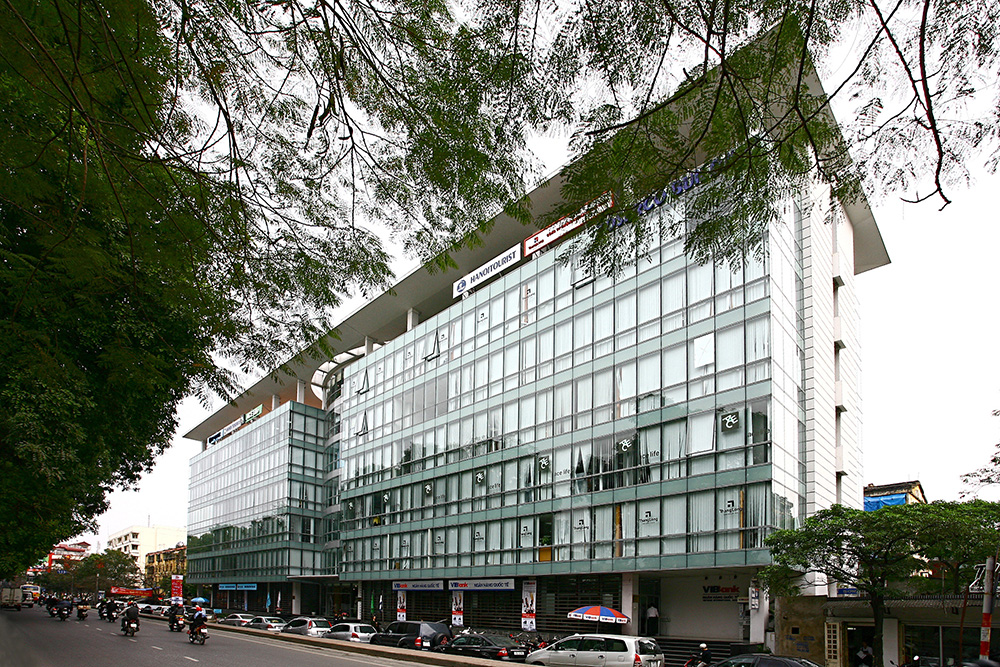
Hanoi Toserco office building, using “glass face” – works awarded 2006 architecture award (architect Ho Thieu Tri)
In 1851, at the International Expo in London, a competition for the design of an exhibition hall was held. The plan to occupy the championship is called Crystal Castle, designed by Paxton, an agricultural engineer. Crystal castle 563m long, 124.5m wide with whole glass walls and roof. We have contributed to the creation of modern world architecture; and in 1851 was considered the birth of modern world architecture. Since the end of the 19th century, glass is an important breakthrough element to create many modern architectural works, bringing a new look. Glass is also an important factor for the development of many schools and architecture in the modern architecture in general.
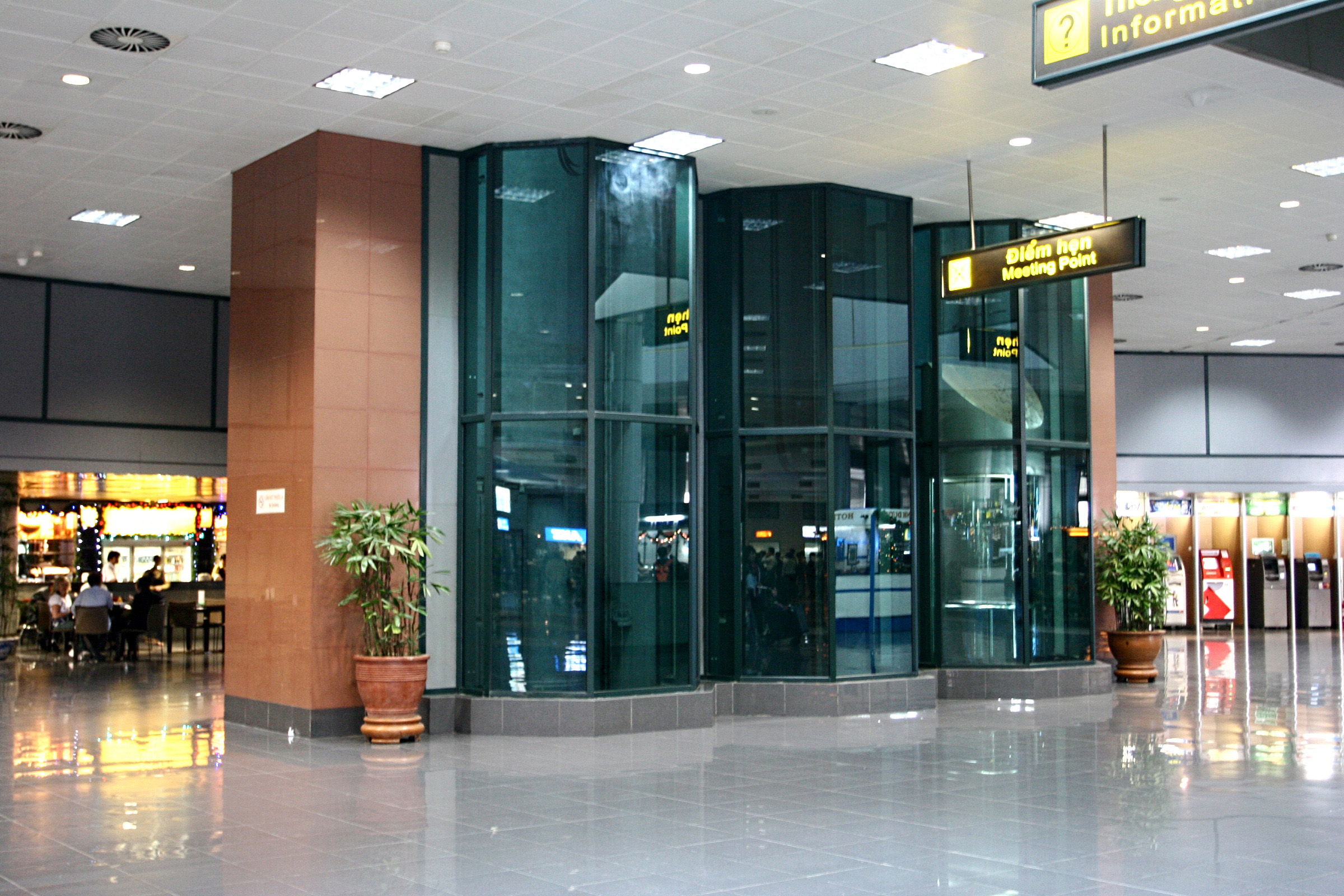
Glass used for covering structures for elevator cages (Noi Bai T1 Terminal – Hanoi)
Pros and cons of glass
Advantages: As mentioned above, the biggest advantage of glass is the ability of light to pass through and prevent wind and dust. Besides, the glass has a smooth, smooth surface that is convenient for cleaning. Glass materials contribute to enriching the surface of architectural materials, with remarkable efficiency, changing the face of architecture, aesthetics and more vivid. Compared to other types of cover structures, glass has smaller thickness and load, faster and more economical construction and erection; with many linking solutions – structure. Glass materials effectively support designers in creating space and architectural shapes. Glass materials widen the space, without the feeling of being divided, displaying many other architectural components. Glass increases the aesthetic efficiency of architectural space, creates many visual effects, lighting efficiency (both natural and artificial lighting)
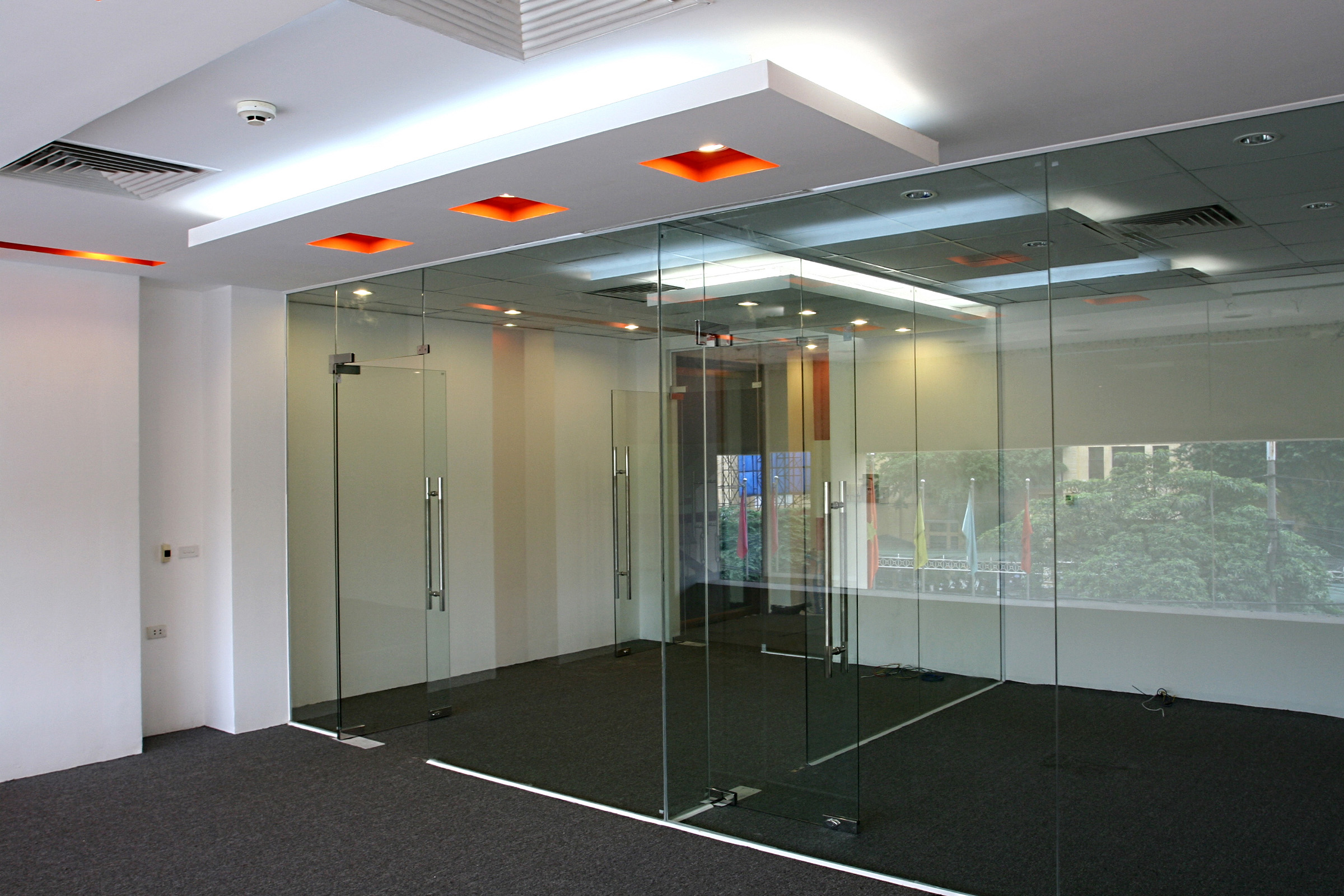
An office uses dividing glass walls, under construction
Disadvantages: Since its inception, glass has revealed certain weaknesses and shortcomings. It is capable of bearing less, fragile; and when breaking is not safe (causing damage). Glasses (first time) make it difficult to create geometric shapes other than planes, making it difficult to create complex perimeters. Glass is also easy to be destroyed when mechanical shock occurs, fire … more than other materials. The glass also produces a thermal effect (glass cage effect) – a problem that greatly affects the construction environment itself and the environment at large scale. However, with the current technological advances and new technologies, most of the technical disadvantages of glass have been solved. The only remaining problem is the creation and proper use of this material by architects and builders.

Bedrooms and bathrooms are separated by transparent glass walls
Diverse types of glasses
Currently, there are many types of construction glass, both domestic and imported glass. Each type has different specifications, different prices (depending on the manufacturer). Special types of glass produced by modern technology with outstanding advantages are no longer exclusive of big projects, special projects or high-rise buildings. These types of glass go into each small project, even with small construction volumes. Glass can be classified as follows:
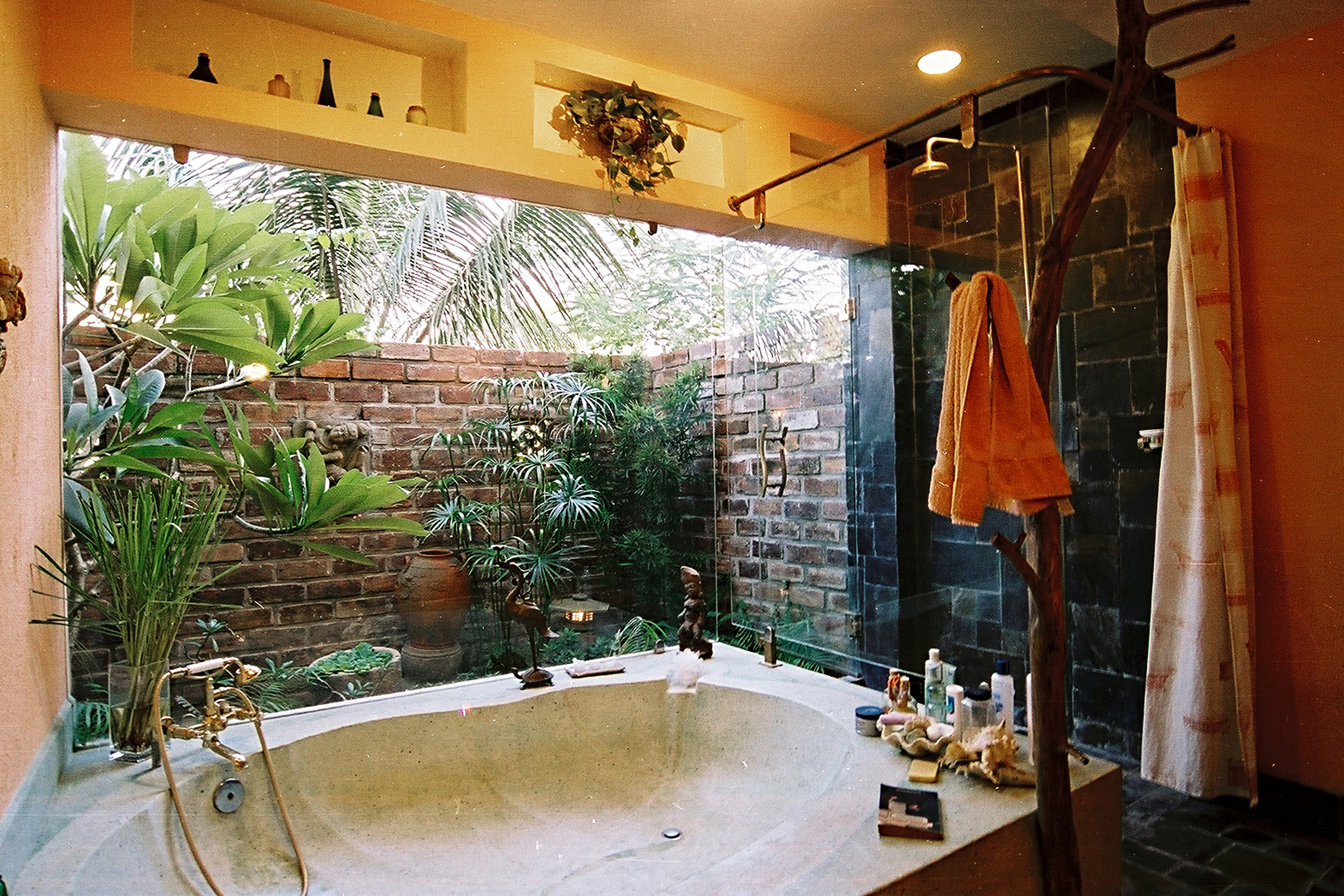
The bathroom is spacious and close to nature thanks to the transparency of the glass
Architects have come with more glasses
In our country, in recent years new glass materials have been widely used and new architects have researched and applied them to architectural forms and other effects for architectural performance and aesthetics. Previously, most of the glass was used as a door to light up. The reason is the economic and technological factors. Although glass material is based on silicate, not a rare material, the cost of glass is still high due to technological factors, especially for special glasses such as toughened glass. Besides, the import and mastering of our technology is also slow along with construction technology and the economy in general. It is also impossible not to mention the parallel element – the development of architecture. A new architecture, a new architectural aspect requires new technologies and materials, as well as those factors that adversely affect development architecture.
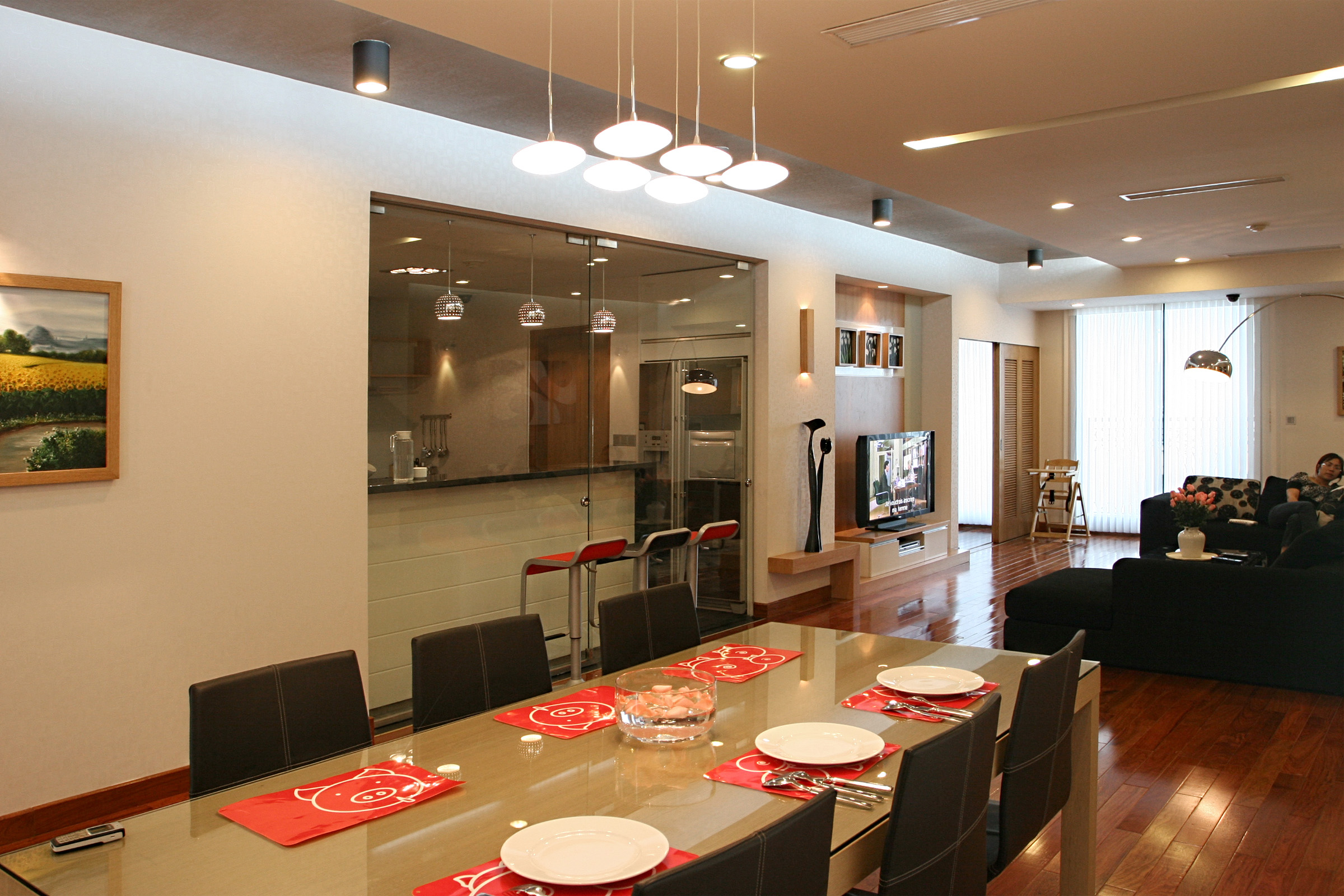
The glass partition separates the kitchen area from the living space with a flexible living space
Currently, glass is an indispensable material in construction works. The architects make the most of the advantages of both performance and aesthetics brought by the glass. Do not stop at the glass used to light the door, but glass is present everywhere in the building, in the architectural department with many different ways and roles, with different effects. Compared to modern world architecture, we are a distance away, but do not deny that glass is contributing to changing the appearance of Vietnamese architecture – especially in urban areas.
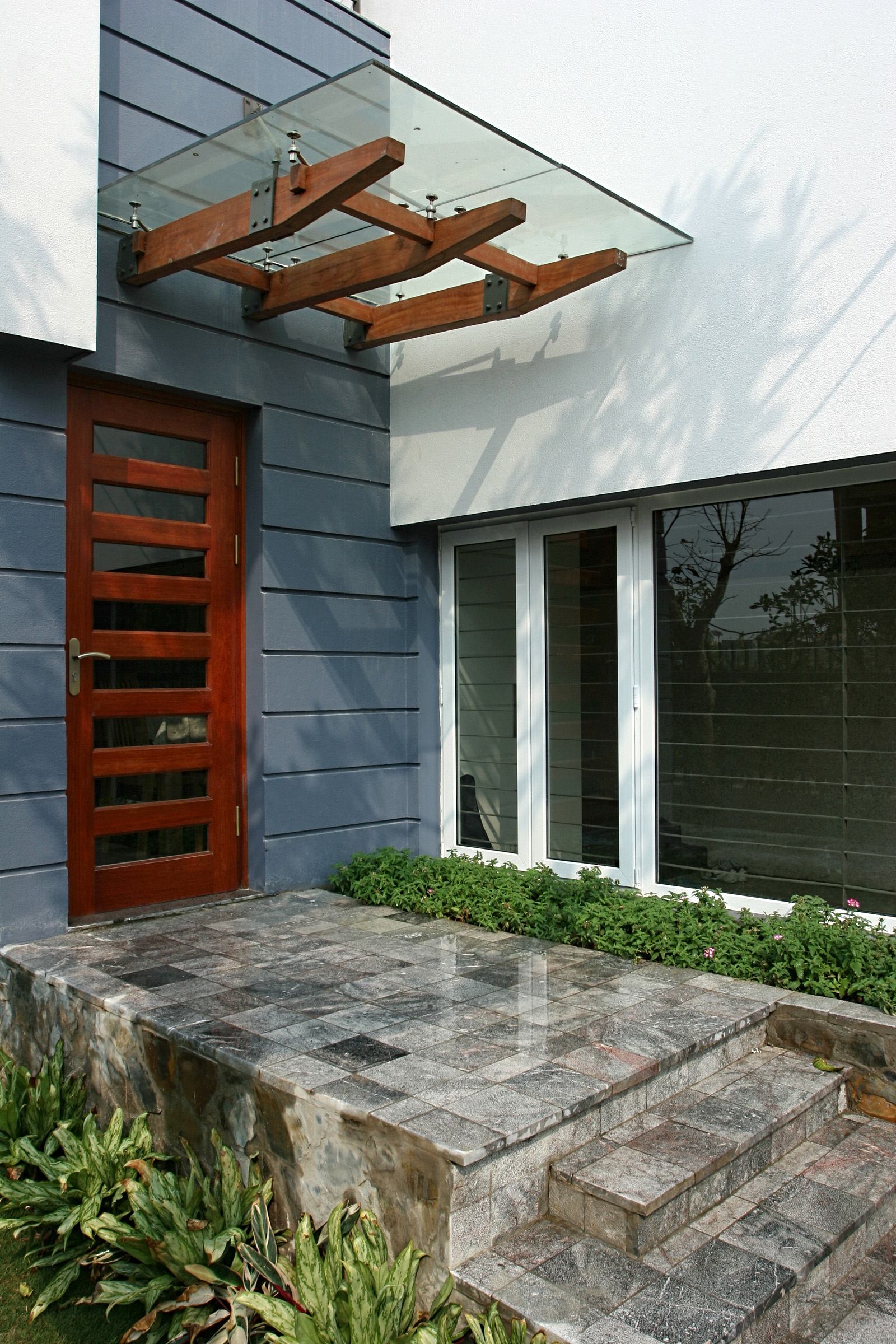
The glass makes an olive
Applications of glass in modern architecture
– Door glass: Glass is an element in the construction of windows and doors. However, there are many other doors that can be combined with traditional wooden doors such as plastic doors – glass, aluminum doors – glass, steel doors – glass … And glass itself and its own accessories can also become doors, regardless of the traditional materials and door structures (mold, door …)
– Glass for partition: Glass is now used as a very popular partition thanks to its advantages of noise, odor prevention … creating a private space that is not obscured, can be seen out, or from the outside looking. In large spaces (like offices), this is also a way to get light across the room and create a deep effect on the architectural and interior space. Glass for walls can use frame (wood, aluminum, steel …) but can also be completely independent with tempered glass and glass accessories. Glass is also made popular shower compartment in toilet (standing shower cabin). Glass wall in this case is very advantageous because it is water-resistant, transparent, it does not tighten the space, and the wall structure hardly occupies the area on the ground.
– Glass for walls, covering structures: Many buildings have been built recently without walls and … windows. By simply the whole facade of the building has been covered with a glass frame system (seamless window) instead of the traditional wall covering. The imprint of modern architecture is quite bold in the architectural works with vertical facade solutions like this. In addition, the glass is also made of various types of cover structures such as elevator lifts, railings, even … fences …

Glass for lobby, Glass for concrete replacement floor
– Roof glass: Roof glass is used in many types of works due to the advantage of light and rain prevention. Glass roof can be used in large areas, large spaces such as inner courtyard, terrace, public room … until smaller areas such as lobby roof, tum roof, skylight roof … in family houses.
– Glass for floor: Do not stop at walls, roof … glass with load itself or static load; The glass is able to withstand dynamic loads such as structural floor. Many types of toughened glass allow for flooring such as floors, floor mats, terraces … Glass floors are applied in tight spaces with low light to get light from above. In addition, the glass floor is also used to show a certain detail or effect on the floor, under the ladder such as landscaped gardens, ornamental tanks, or the background decorated below.

Glass for tabletop
– Glass made of other household items and furniture: Glass is also used as a table surface, shelf … in the interior. The smooth glass surface is easy to clean, so the glass is often chosen as the cover for horizontal surfaces that are easy to stick to water, dirty feast … such as water table, dining table, reception counter, bar face, cabinet surface … Party Besides easy cleaning, transparent glass allows light to pass through, does not block the view, exposes the materials and patterns below and creates a certain aesthetic effect when light is shining on.
– Decorative glass: In the world churches, decorative glass is used very early in the form of stained glass. Currently in modern glass painting architecture and decorative glass in general are also applied much in the form of glass mosaics, glass grinding, painted glass, glass sculpture 2D, 3D … These types of decorative glass for signs Aesthetic effect is very good when combined with natural light (from outside) or artificial light (clear)

Glass for roofing, handrail, Glass for stairs
Beautiful, transparent and … double-edged sword
Clear glass is a material with many advantages. The advent of glass has changed the face of world architecture. We have been and will continue to go along with architecture. However, everything has two sides of it. Modern technology increasingly increases the advantages and disadvantages of glass; That does not mean that glass can be used anywhere, anywhere and can replace other materials. How to use glass to make a reasonable correlation with the proportion of other materials, harmony in color and material sensibility, right function … completely depends on the talent and conscience of the architect. The ability to meet the architectural creativity of the glass, the new technical elements make the new advantage of the glass almost unlimited. Manufacturers can meet all the requirements of shape, size, aesthetics, durability, and other specifications … But in fact the misuse of glass in architecture or use of glass is incorrect. the place is going on, and we have to suffer to some extent. A bedroom with too many glass doors is at risk of overexposure affecting users’ health and psychology; a room of four sides is difficult to store, there is no place to hang other things; a large glass floor can cause slippery; The glass roofs without regular sanitation conditions actually cause aesthetic loss due to stagnant dust on the ground, mechanical shocks that break the glass to do damage … And the most important thing – with the house glass cover – is a glass effect – increases heat, and must use technology to overcome this (air conditioning); whereas the basic problem is that the architecture solution is not correct.
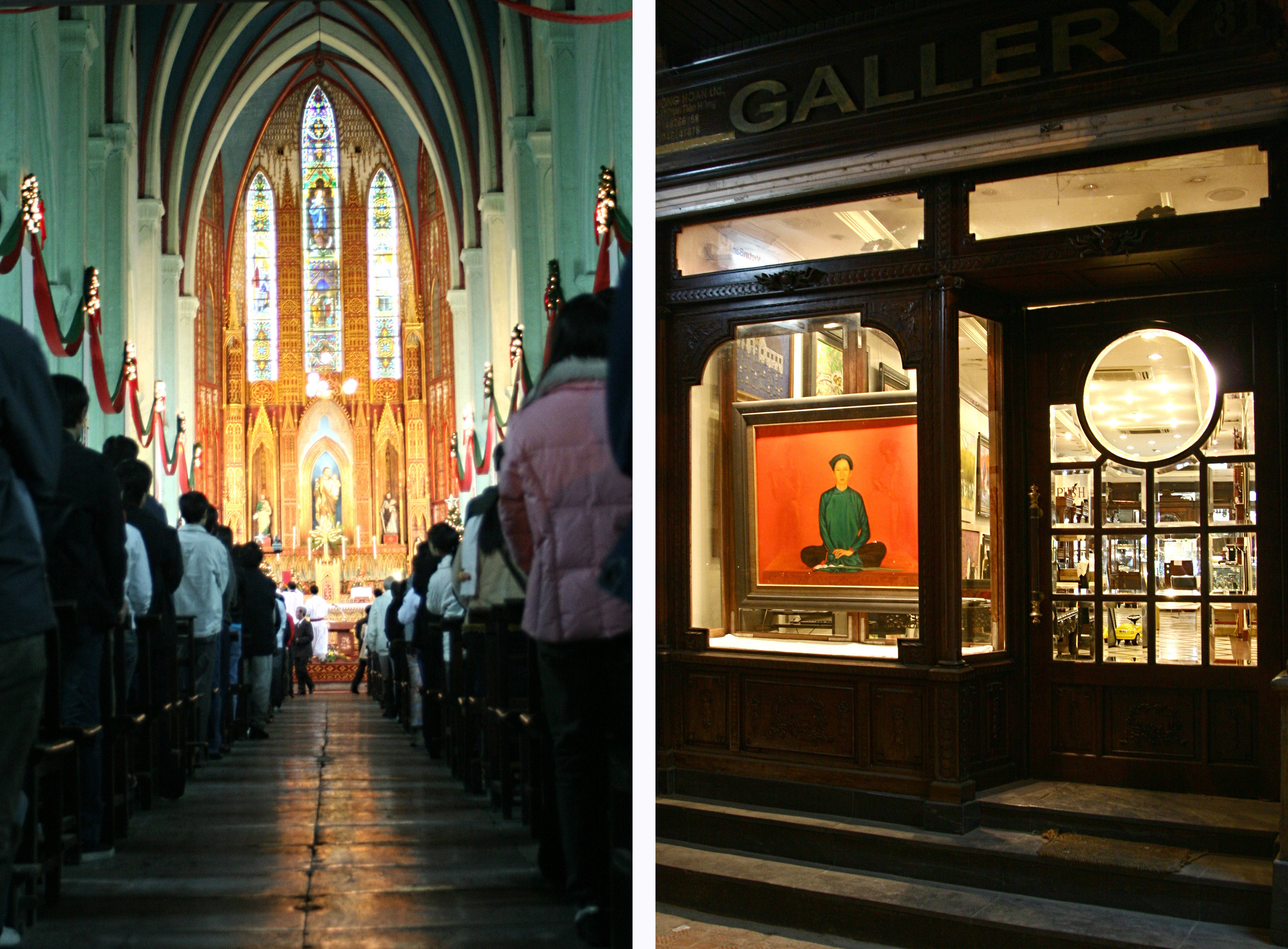
Decorative glass paintings (In the Cathedral – Hanoi), Use glass for door cleverly create aesthetic effect
Concrete, glass and steel are formulas for modern architecture. Despite many changes, there are many new views; then the glass material will still play a key role in the future.
according to: tapchikientruc.com.vn



